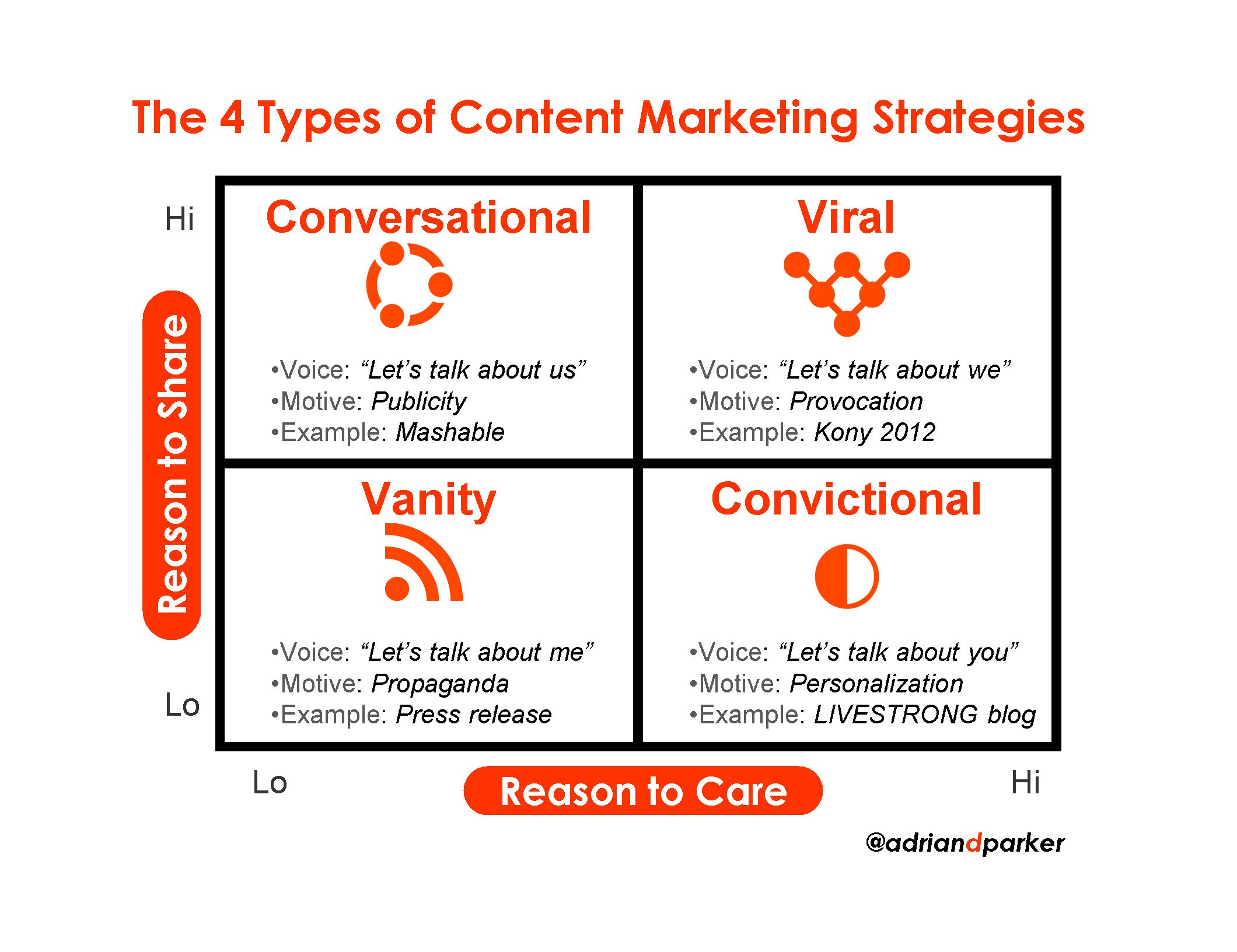How To Spot The Best and Worst Content Marketing Strategies
Asking a marketer to describe their brand’s content strategy is like asking my wife what she wants for dinner. You’ll hear 50 different answers that really only distill down to a handful of choices:
FORMAT - “We use video, images and real-time engagement…”
MEDIA - “We create paid, owned and earned experiences…”
CHANNEL - “We use Facebook, Twitter, YouTube, LinkedIn…”
SOURCE - “We have curated, syndicated, and costume content…”
INTENT – “We drive traffic to our blog for lead gen and SEO…”
The only answer you won’t hear is “I don’t know.”
While these inputs represent vital building blocks for connecting ideas, communities and people, successful content marketing strategies start with 2 core questions:
Who are we talking to… and why should they care?
What are we saying… and why should they share?
Content is the oxygen of your social media ecosystem. Strategy is the process of converting it into results by regulating what you do, why you do it and how. A content marketing strategy dependent on a specific channel, format or source will soon be on life-support as technology changes and interest wanes. There is a better way.
At Intuit we've had the opportunity to test, learn and iterate on several campaigns targeting global business professionals and small business owners.
The content marketing strategy we've adopted focuses on maximizing the 2 core questions and scaffolding our content plans around consumer-driven motivations. The best and worst content marketing strategies come to life in 4 types:
WORST: Vanity Content
With lagging consumer relevancy and even lower trust, many traditional, outbound marketing tactics fall into the vanity category. Companies struggle to hit tomorrow’s revenue forecast and reach today’s audience with yesterday’s playbook. Until recently the marketing solar system revolved around products and brands, not consumers. Mass scale was rewarded, encouraged and expected. Vanity content strategies are like a bad blind date that expects you to pay for dinner after blabbering about themselves through three painful courses. To be fair, vanity content pieces do have a place and a purpose but a strategy built on this approach is destined to fail. Just say no.
GOOD: Conversational Content
Conversational content powers Twitter timelines, serving as a virtual village where ideas go to spread or die. The steady stream of share-bait presents easy access to news, information, updates and random distractions. Done right, this approach requires dedicated resources who are equipped with the right tools and empowered by leaders. Like a great dinner party, the key to great conversational content is to start the discussion, not own it. Conversations can quickly become viral or convictional based on how audiences respond so leave room for the unplanned.
BETTER: Convictional Content
Content that evokes emotions, strengthens beliefs or confronts assumptions is challenging to produce yet powerful to consume. We often speak of “humanizing” or “personifying” our brand, alluding to the notion that people connect more easily with other people. This approach works extremely well when focused on the people behind your products and a story bigger than your brand. What this content approach lacks in scale it makes up for in transparency and trust. Great content elicits an action, which is the ultimate goal of most brand marketing and media. Instead of asking for the action, convictional content asks for a discussion.
BEST: Viral Content
The word “viral” has been abused more than Charlie’s bitten finger. By definition, the term denotes that new consumption comes from the activities of current consumers.
Or said another way, users begat other users. Even within Intuit, virality has various degrees.
Sales enabling content for QuickBooks Online Accountant Edition (B2B) performs very differently from a TurboTax video campaign (B2C). While every piece of viral content isn’t necessarily marketing, all viral marketing delivers on the core 2 motivators: giving consumers a reason to share and care.
It begs an obvious question: In a world transformed by digital technology, why is viral content so prevalent online yet elusive for marketers?
Easy answer: We’re busy creating innovative ways to talk about what we know best - ourselves.
In business, strategies answer obvious questions and question obvious answers. Any content plan will evolve over time but should always serve as a true north representation of what and who your brand stands for.
Last week at Social Fresh West in San Diego I had the opportunity to discuss how to drive digital results by focusing on relationships. This “Care & Share Model” illustrates how it came together using a recent case study from Intuit. You can check out the full presentation on Slideshare.
I look forward to hearing how brands and small businesses alike tackle these challenges.
If your content strategy had a Facebook page, would any of your customers like it? Leave a comment below with how you would rank your own content marketing strategy. Feel free to link to examples!



